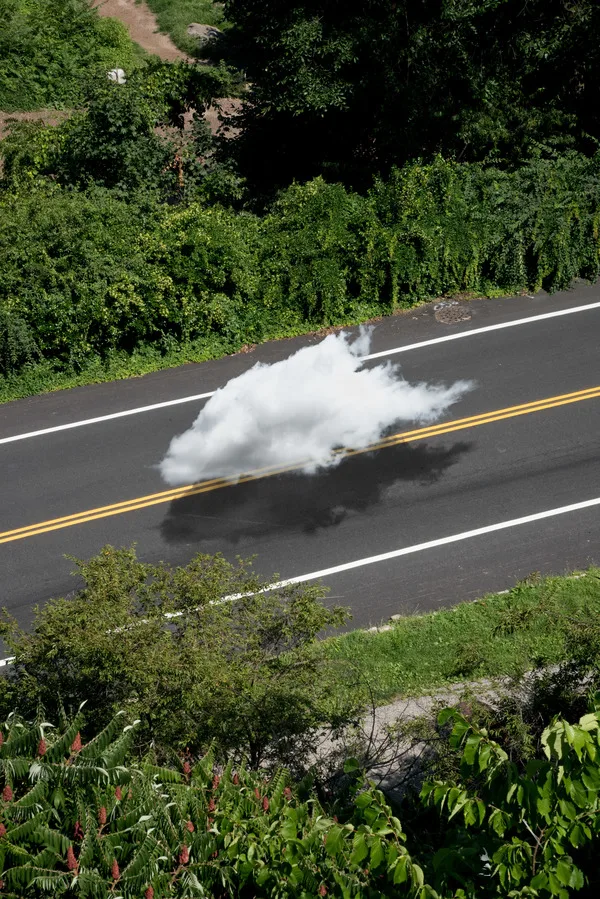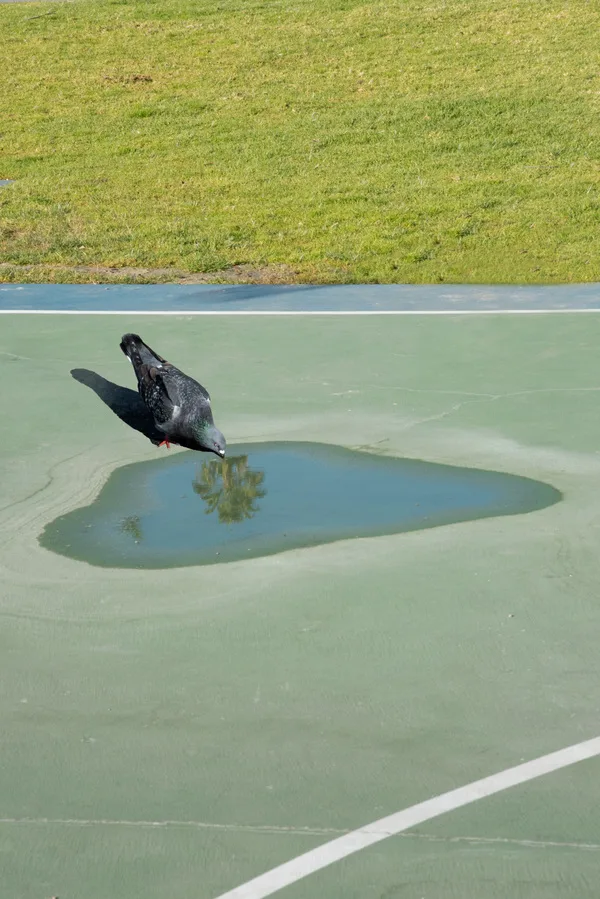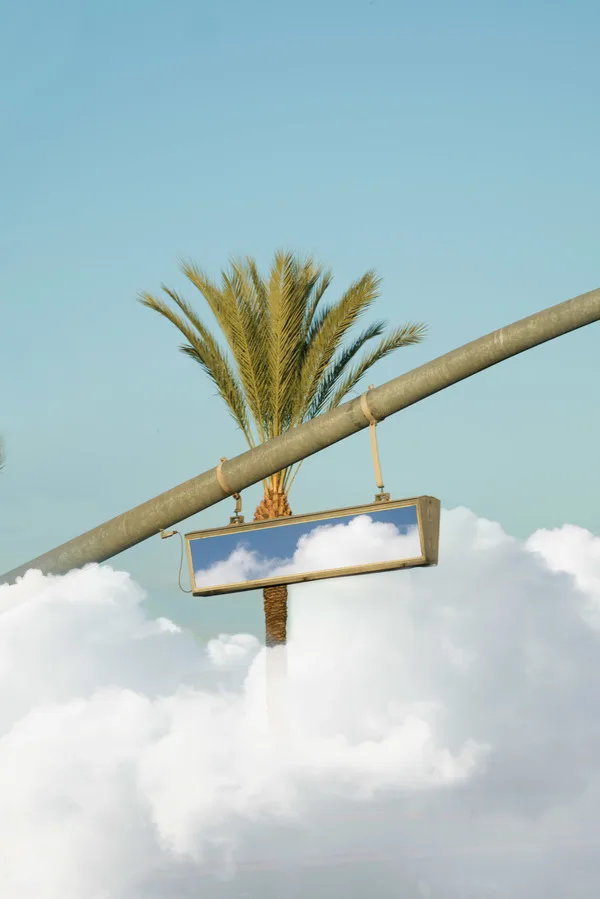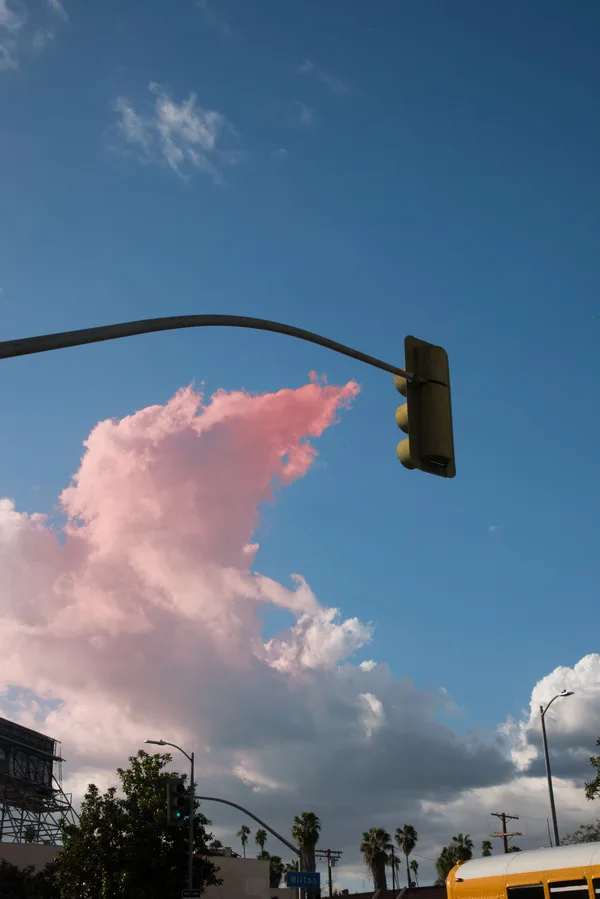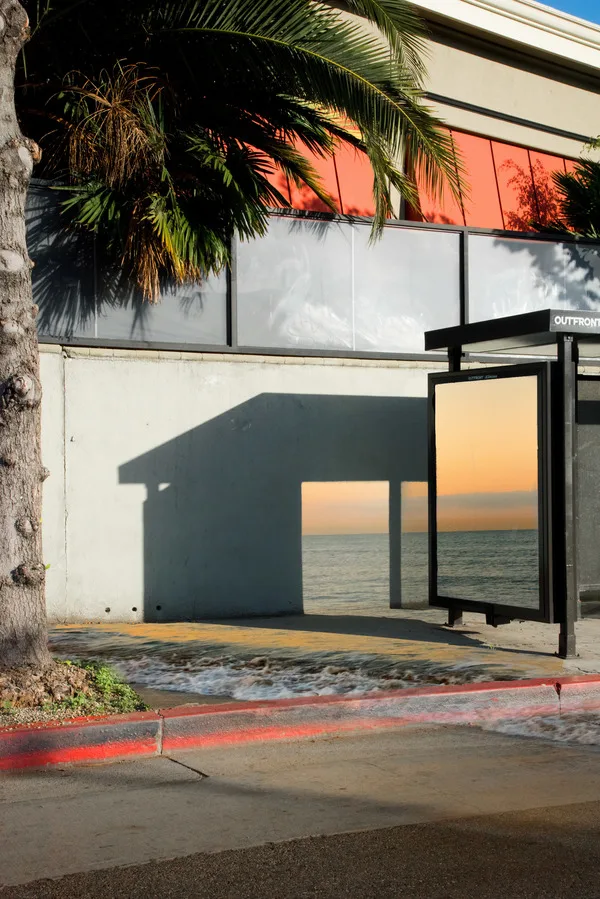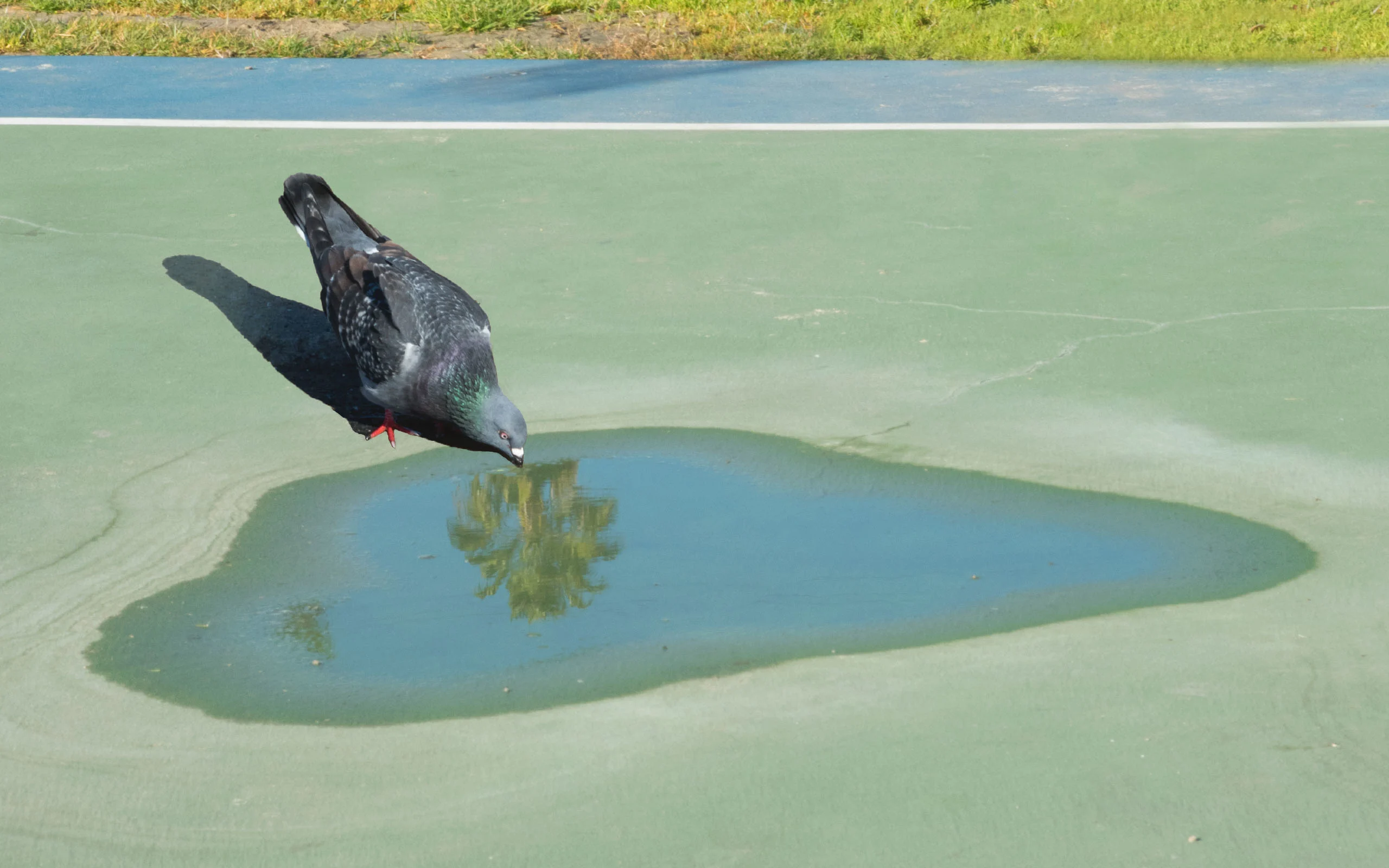
“I just got tired of waiting for exciting moments to photograph,” Kanghee Kim says. And so one day, when the New York-based photographer was running errands while waiting for that special moment when stars align and you can snap the perfect photo, she had an epiphany. “It was then I realized that, instead of waiting for miracles, I could create the magical moments in my imagination.”
And so her project Street Errands was born. The series shows enchanted scenes in which palm trees are hiding behind street lights, busstops are transformed in pink sky horizons and clouds seem to arrange themselves to perfectly match their surroundings.
Kanghee combines natural elements with typical urban features to find a balance between busy New York life and the quiet outdoors. “I am trying to keep a happy balance between my time in the city and out in nature. As much I sometimes get tired of NYC, as a person who only grew up in cities I am so used to living there. It is inevitable to miss one or the other wherever you are.”
At first glance the viewer is tricked into believing the magical moments in her photos actually happened, but on closer inspection you realize they are too perfect to be true. Kanghee makes them in Photoshop.
“I can’t travel abroad due to the restriction of my VISA status,” Kanghee, who’s originally from South Korea, says. “Manipulating scenes introduces infinite possibilities, free from limits or restraints from real life. Creating surrealistic and fictional images allows me to feel a bit liberated from this complication.”
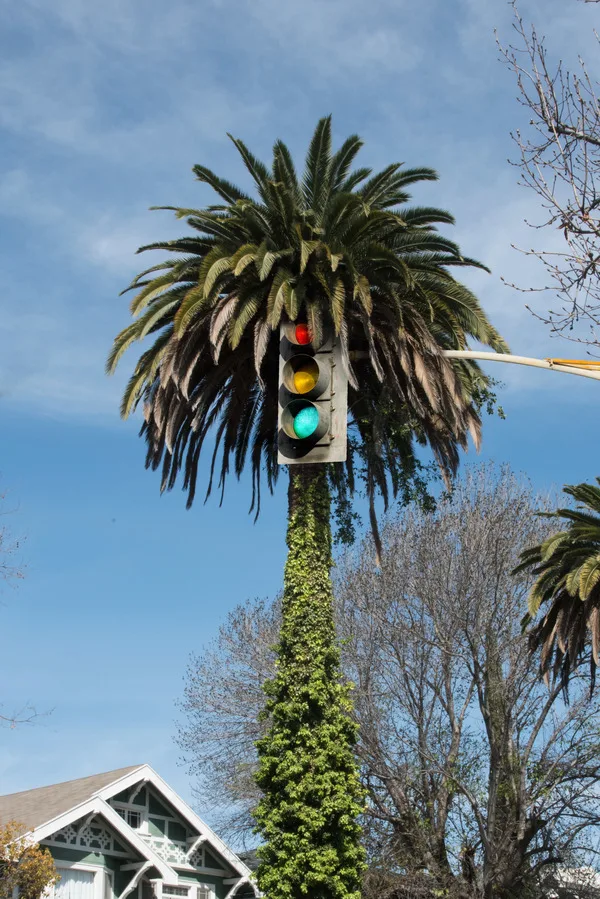
Kanghee is well aware of the controversies of manipulating images in the photography community. “Photoshop is widely used in commercial photography to refine the details and make the images look flawless. I was intrigued by this idea and so I stopped covering the flaws or marks in my photos,” she says.
Instead, she uses Photoshop to rediscover the spark of two images when you merge them. “I started to think of it as a painting and so I show the post production process as a way of mark making. I intentionally leave traces of imperfection untouched.”

